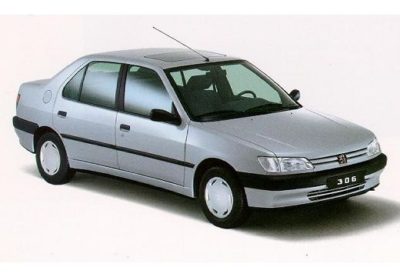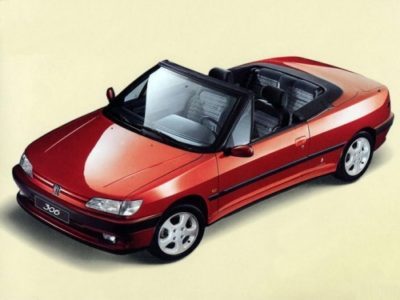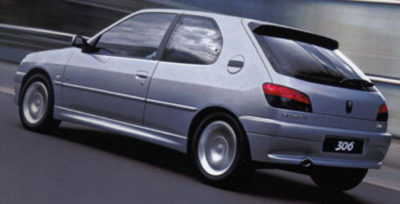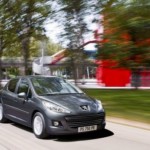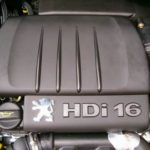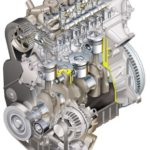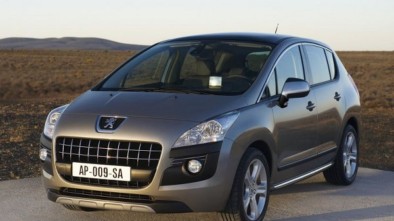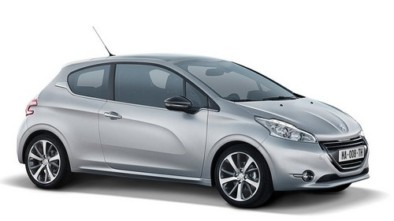Peugeot 306 1993 - 2002 - Used, experience, engines
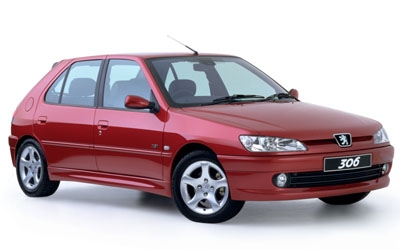
Peugeot 306
Peugeot introduced the Peugeot 306 in March 1993. Initially, 3 and 5 door and hatchback body models were offered, while the sedan, station wagon and convertible were later introduced. For the first time, Peugeot uses the "SW" designation for the station wagon, which you can still see today on station wagon models from this manufacturer.
The Peugeot 306 is the successor to the Peugeot 309, and the car itself was almost identical to the Citreon ZX that was introduced two years earlier. The chassis used by the 306 and ZX was subsequently used on the model xsara.
All engines in the range were endorsed four-cylinder units that built a solid reputation during exploitation in older models. Initially, 8V motors from the “TU” generation of 1,1, 1,4 and 1,6 were offered. Shortly after the start of sales, the smallest gasoline was thrown out of the box, and more powerful "XU" engines were offered in automatic transmission or sportier models. The 1,8-liter gasoline engine was offered with models fitted with automatic transmissions, while the sporty XSi and S16 used 2,0-liter 8V and 16V engines. As for diesel, Peugeot initially offered turbo diesel units with a 1,8-liter intercooler, which were soon increased to 1,9 volumes. The turbocharged engine was known for being a great 306 engine, which was great for the chassis and provided excellent driving performance with great economy.
Peugeot revised this model in May 1997, so the Peugeot 306 got a slightly modified exterior that was similar to the one the then new Peugeot 407 had. The turn signals on the new model were integrated into the headlight, and the new font was used for print the model name on the back of the car. 1,8l and 2,0l petrol engines with 16V heads, and 1,9 turbo diesel was replaced by a new common rail turbo 2,0 HDI motor.
The Peugeot 306, manufactured after 1998, has some other improvements, such as the center console with an aluminum effect, a chrome Peugeot logo in the middle of the steering wheel (on previous models the logo was black).
As for the Peugeot 306 sports models, the "Rallye" model, which is mechanically identical to the GTI-6 / S16 model, was launched and had less basic equipment, which reduced its price and weight. The weight on this model is 50 kg less than the S16.
The Peugeot 306 ceased production in 2001, when it was succeeded by the Model 307. Wagon and convertible models remained in production until 2002, and the sedan ceased production in 1999 due to very poor demand for this type of bodywork.
APPEARANCE - Peugeot 306
The Peugeot 306 is a beautifully designed hatchback, holds the road perfectly, gives the steering a good turnout on the road and is very precise and direct.
We were expecting more seats in the cab, so, say, the driver's position wasn't going to suit everyone, and the seats were still too slack. The quality of the built-in plastic itself could and should have been better, so expect small rattles on used models. The size of the trunk is at the class level.
The Peugeot 306 is generally not an expensive car, so if you are already planning to buy it, we advise you to look for models such as the XS or XSi that are better equipped and the price difference from the lower variants is not too big. Let us also mention that in 1997 the Peugeot 306 was restyled, so the Peugeot 306 got more equipment and a nicer look after this year.
ENGINE - Peugeot 306
Of the gas stations, the smallest is 1,4. It’s small enough that we don’t consider it further, as it can’t handle the Peugeot 306. 1,6 is the optimal choice. The best ratio of performance and consumption, which, by the way, is not so small. The average you can expect is just under eight liters of unleaded gasoline which is quite a lot. The strongest is the 2,0 that is built into the Peugeot 306 GTI model, but with excellent performance comes a fairly high consumption, so we do not recommend it to frugal customers.
There are two diesel variants for this kind of clientele. 1,9 with and without turbine. The difference in consumption is not large but in performance it is so we advise the one with the turbine. The average consumption of the factory is 4,7 liters of diesel, but expect more.
Engine range:
1,4 L (1360 cc) TU3, 74 HP / 55 kW and 121 Nm
1,6 L (1587 cc) TU5, 88 HP / 66 kW and 135 Nm
1,8 L (1761 cc) XU7, 101 HP / 75 kW and 153 Nm
1,8 L (1761 cc) XU7, 110 HP / 82 kW and 155 Nm
1,9 L (1905 cc) XUD9 Diesel, 88 HP / 66 kW and 196 Nm
2,0 L (1997 cc) DW10 HDi Diesel, 88 HP / 66 kW and 205 Nm
2,0 L (1998 cc) XU10, 121 HP / 90 kW and 176 Nm
2,0 L (1998 cc) XU10, 133 HP / 99 kW and 187 Nm
2,0 L (1998 cc) XU10, 147 HP / 110 kW and 183 Nm
2,0 L (1998 cc) XU10, 164 HP / 124 kW and 200 Nm
On the ride
Although a rather conservative design gives the impression of being a family sedan (air drag coefficient of 0,36), the Peugeot 306 quickly gained recognition for its maneuverability. Thanks to the special attention paid to the suspension (passive rear-wheel steering, stabilizers on both axles) and favorable mass distribution, the Peugeot 306 has long been considered the best-performing car in its class. the cabin is modestly decorated but fully functional
The successful production version of the Peugeot 306 also served as a good springboard for the sporty GTi variant, which saw the light of day in 1996 and won the hearts of many on the shortcut.
FACELIFTING - Peugeot 306
The Peugeot 306 experienced its refreshment in May 1997 when designers, in an attempt to match the style of this model with the popular 206-com, modified the headlights, radiator grille and bumpers. The necessary changes in the appearance of the instrument panel were also made, and the engines were rejuvenated with four-valve technology. The weak point - the upholstery of the door has separated from the steel sheet.
A significant novelty in the engine compartment of the Peugeot 306 did not appear until 1998, when the classic diesel was replaced by the first generation of the HDi 2.0 engine. Although of the same power, this turbo-powered engine has brought a reduction in consumption and pollution, with quieter operation and better power delivery.
MASTER'S OPINION - Peugeot 306
Let's now look at what distinguishes the Peugeot 306 as a used car. First of all, mechanics say that this, in contrast to some newer models of the same house, is a "car without a mistake". The body is very resistant to corrosion (as with the 406, 75% of the sheets are galvanized), the original parts are long-lasting (although not cheap), and the engines are extremely durable (of course with proper maintenance).
As a weak point of support for the Peugeot 306, the vertical support links of the stabilizer stand out, and the condition of the wheel balls needs to be checked more often. In the case of engines, it is symptomatic that the head gasket "blows" for about 150000 kilometers, as well as oil leaks from the turbine at a similar mileage. This information is good to know due to the established practice of returning the kilometer hour, because it can be an indicator of the insincerity of the seller.
For a Peugeot 306 around the age of 10, one should count on replacing the exhaust system - most often it fires a pipe in front of the rear pot. Its welding is certainly possible but, in the long run, it is certainly not advisable.
The disadvantages Peugeot 306 can include the short life of the brake discs that need to be changed almost every other change of brake pads (at 70 - 80 thousand km), as well as the fact that ABS was not on the list of basic equipment, so its existence on the vehicle should be checked. You should also check the condition of the airbag, and count on its replacement if the vehicle is older than 8 years (manufacturer's recommendation).
On the Peugeot 306 check:
- whether the toothed belt is changed every four years or to 60000 - 65000 km. Toothed belt spanners have proven to be quite unreliable and can cause the belt to sag or fall off completely. There is also a way to determine if it is time to replace the belt or spanner: start the engine and listen directly above the engine cover. The sound produced by the valves should be very quiet and disappear completely after 3-5 seconds. If clicks are still heard, the belt or spanners are ripe for replacement.
- The Peugeot 306 tends to spend a lot of time on the front brakes, tires and shock absorbers. Check the condition of these assemblies and try to deduct the cost of replacing the worn parts.
- The gearbox is gentle and the synchronous are easily damaged.
- Air conditioning is very expensive to repair, so make sure it works. The air conditioner pipeline is rust prone and the corresponding pipes are hard to find, so include that in the starting price if there are problems.
- Power windows can cause problems, check that they work.
- Electronics problems that manifest themselves in a variety of ways. Resetting the ECU unit generally solves most of these problems. The cause is the traditionally disastrous Italian workmanship - Magneti Marelli.
Sources:
www.nacionalnaklasa.com
www.autopedija.com
www.b92.net/automobili
Recommendation of similar texts:

Hi there, I am Mladen and I am an auto enthusiast. I started this blog years ago to help like minded people share information about latest cars, car servicing ideas, used car info, exotic cars, and auto technology. You will find helpful articles and videos on a wide variety of cars - Audi, Mercedes, Toyota, Porsche, Volvo, BMW and much more. Ping us if you have anything cool to share on latest cars or on how to make older cars more efficient, or just want to say hi!

